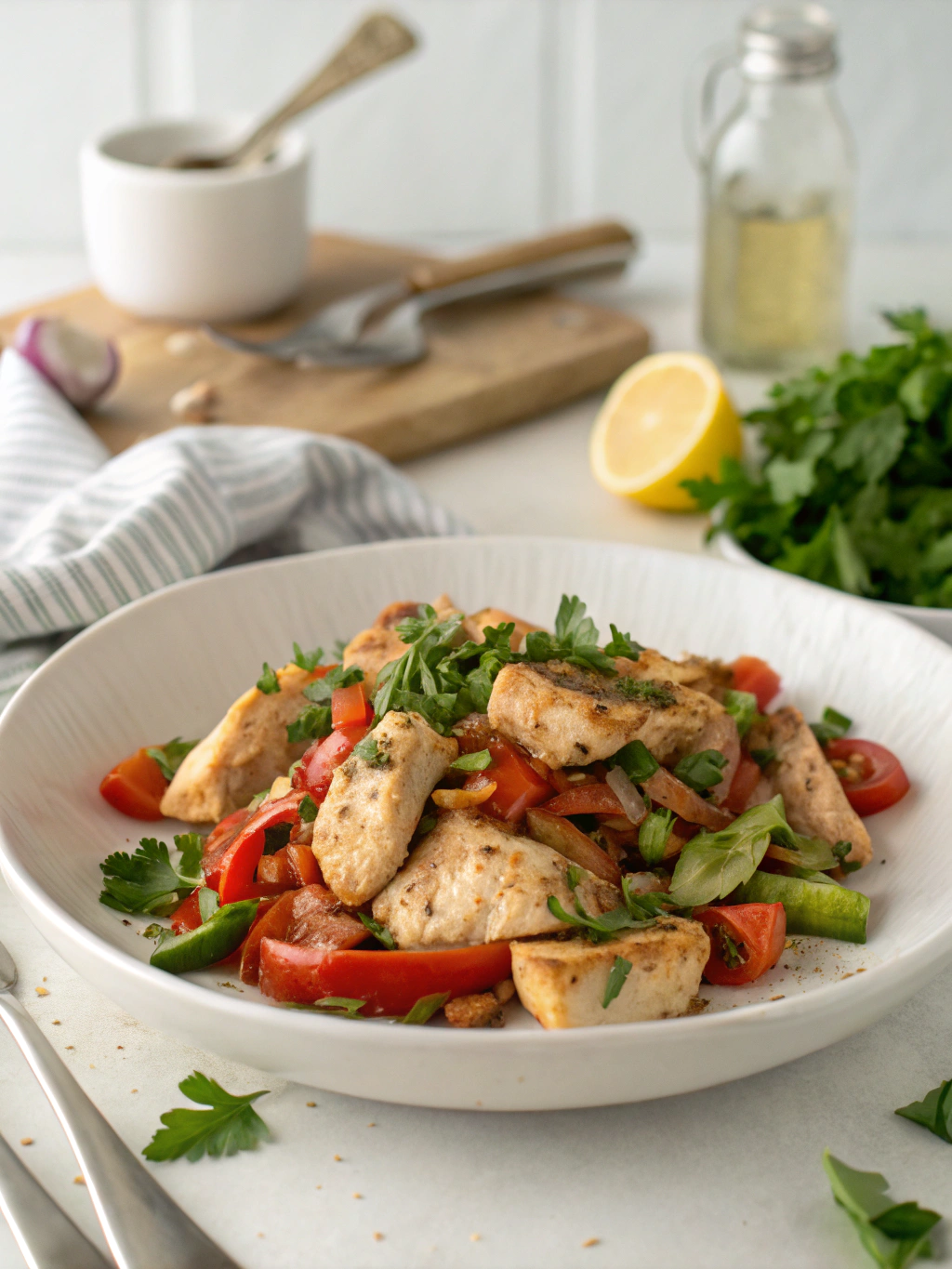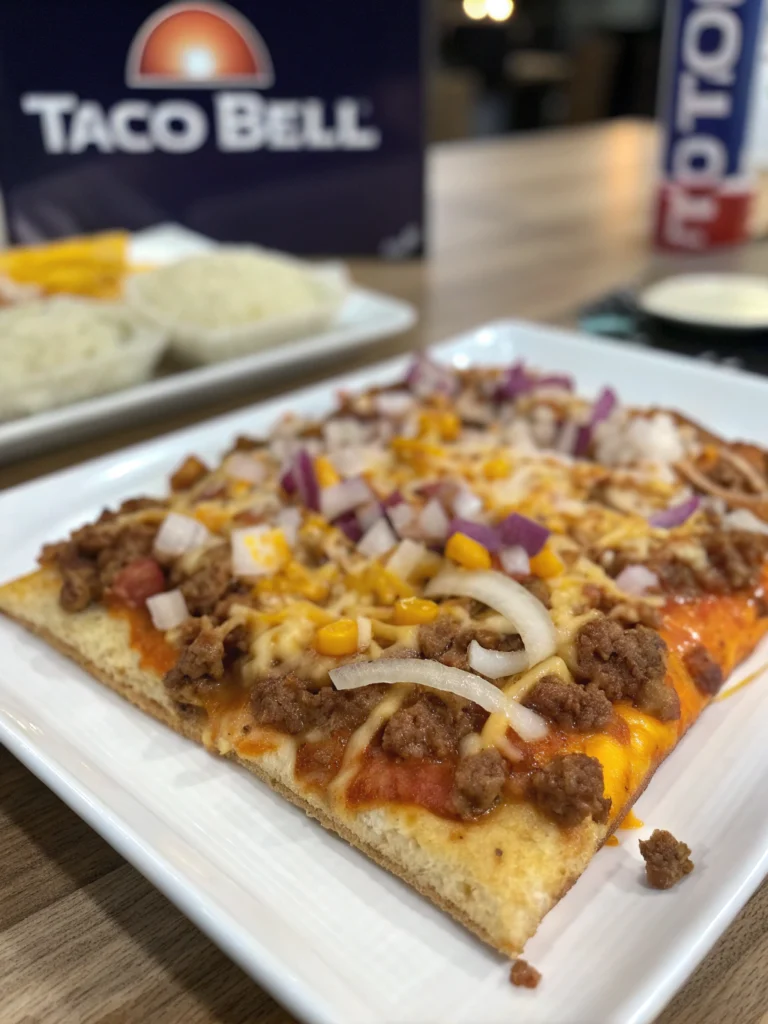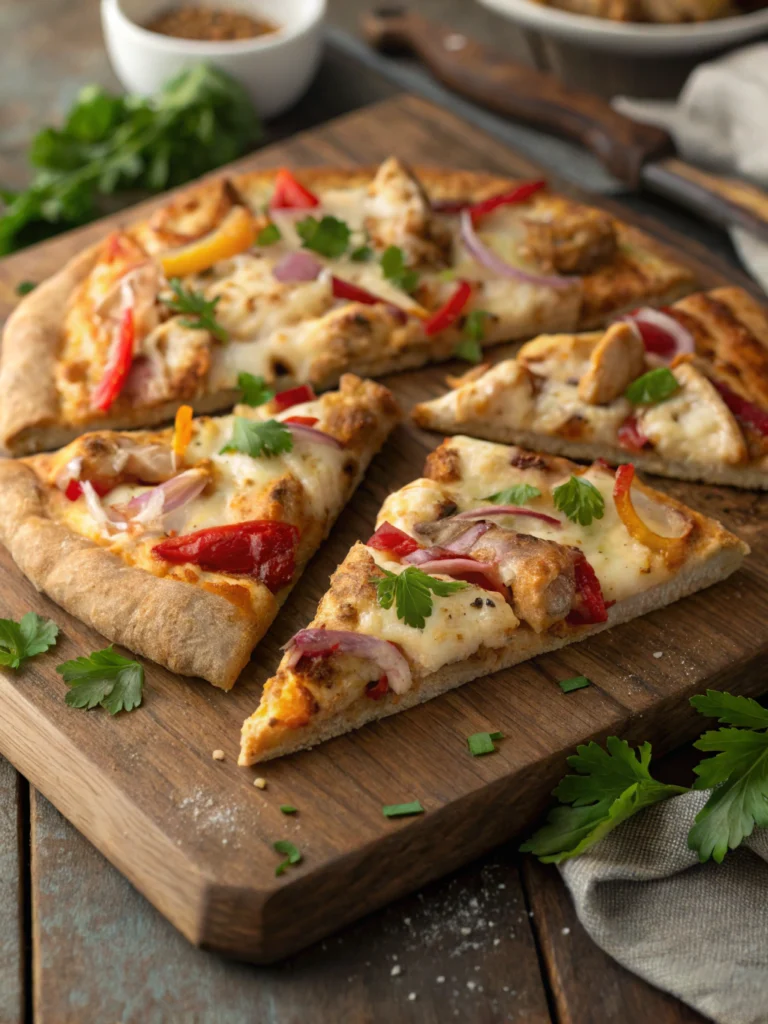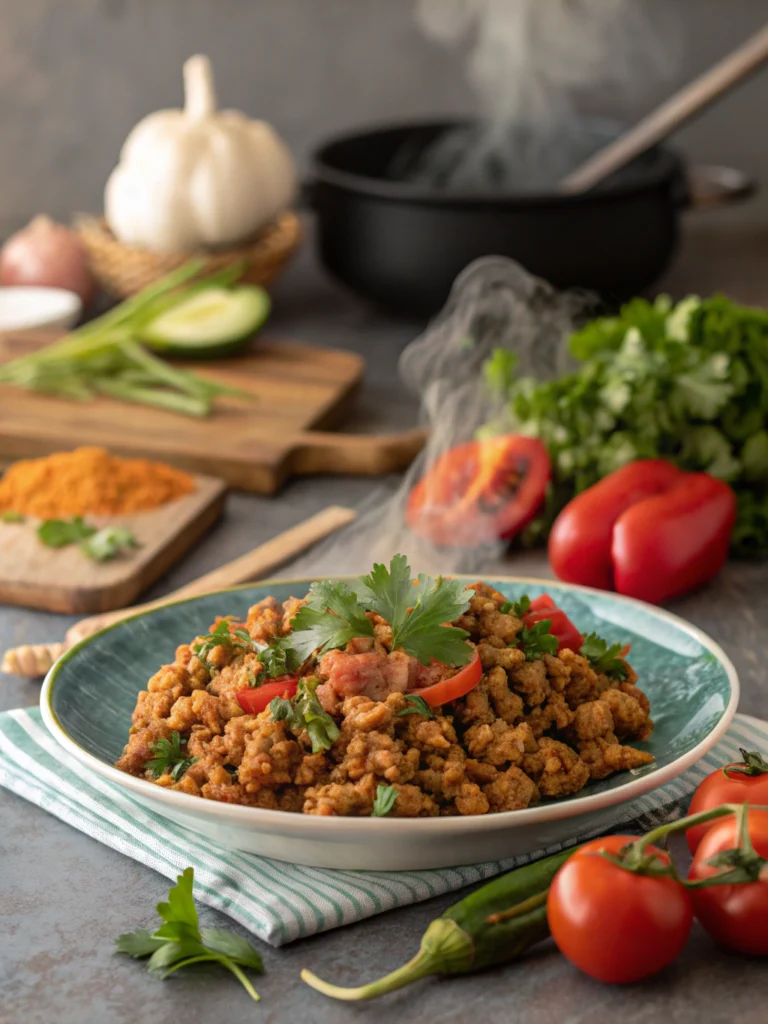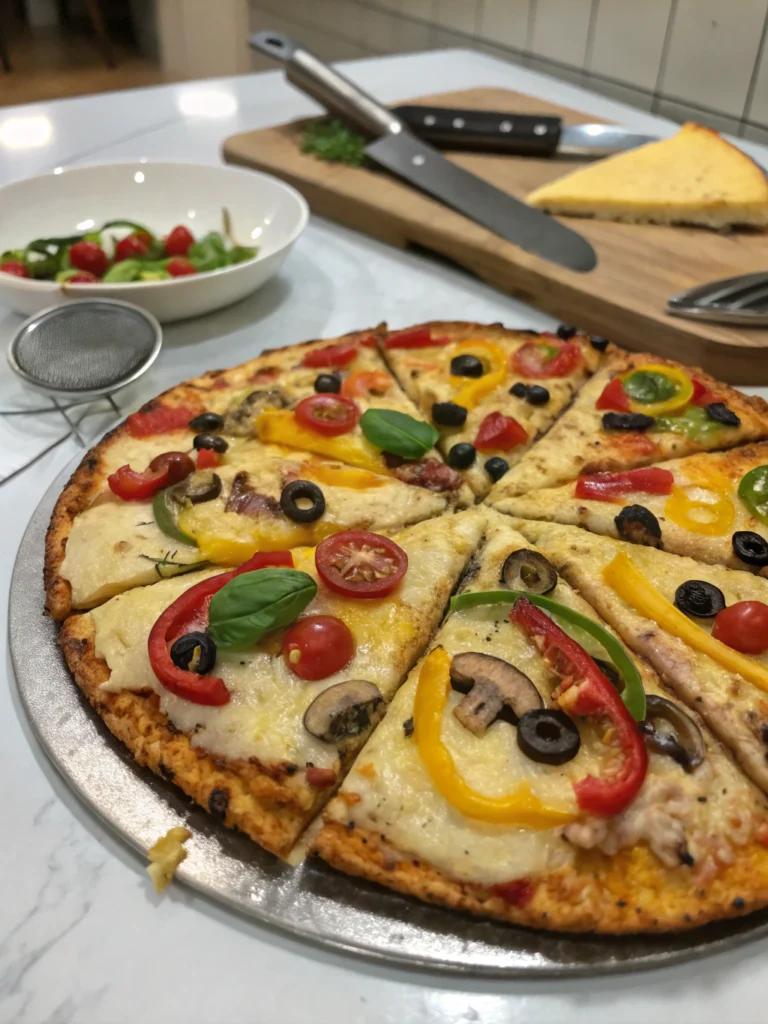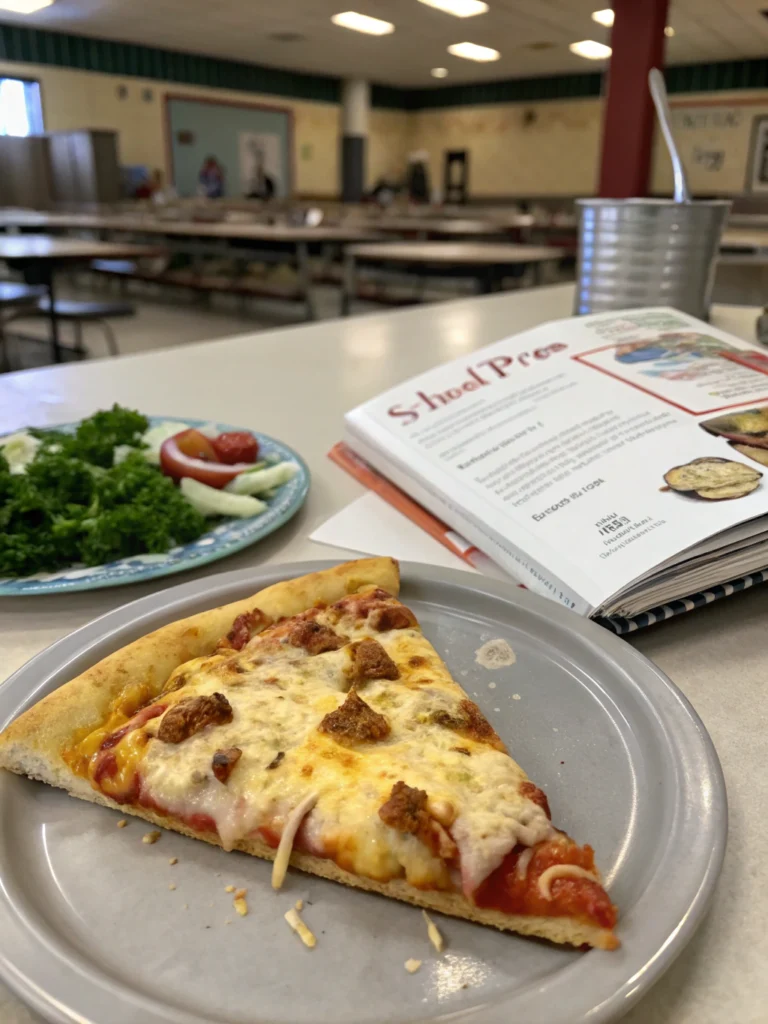7 simple Steps to Make Low Sodium Chicken Recipes. great meal
7 Steps to Make low sodium chicken recipes
Are you tired of bland, tasteless meals in the name of healthy eating? Do you believe that cutting sodium means sacrificing flavor? What if I told you that you could enjoy delicious, satisfying chicken dinners without all the excess salt? In fact, studies show that reducing sodium intake can significantly lower blood pressure and improve heart health. Let’s dive into the 7 easy steps to make low sodium chicken recipes that are full of flavor and perfect for a heart-healthy dinner. Enjoy guilt-free meals without sacrificing taste and discover low carb chicken meals
Ingredients List
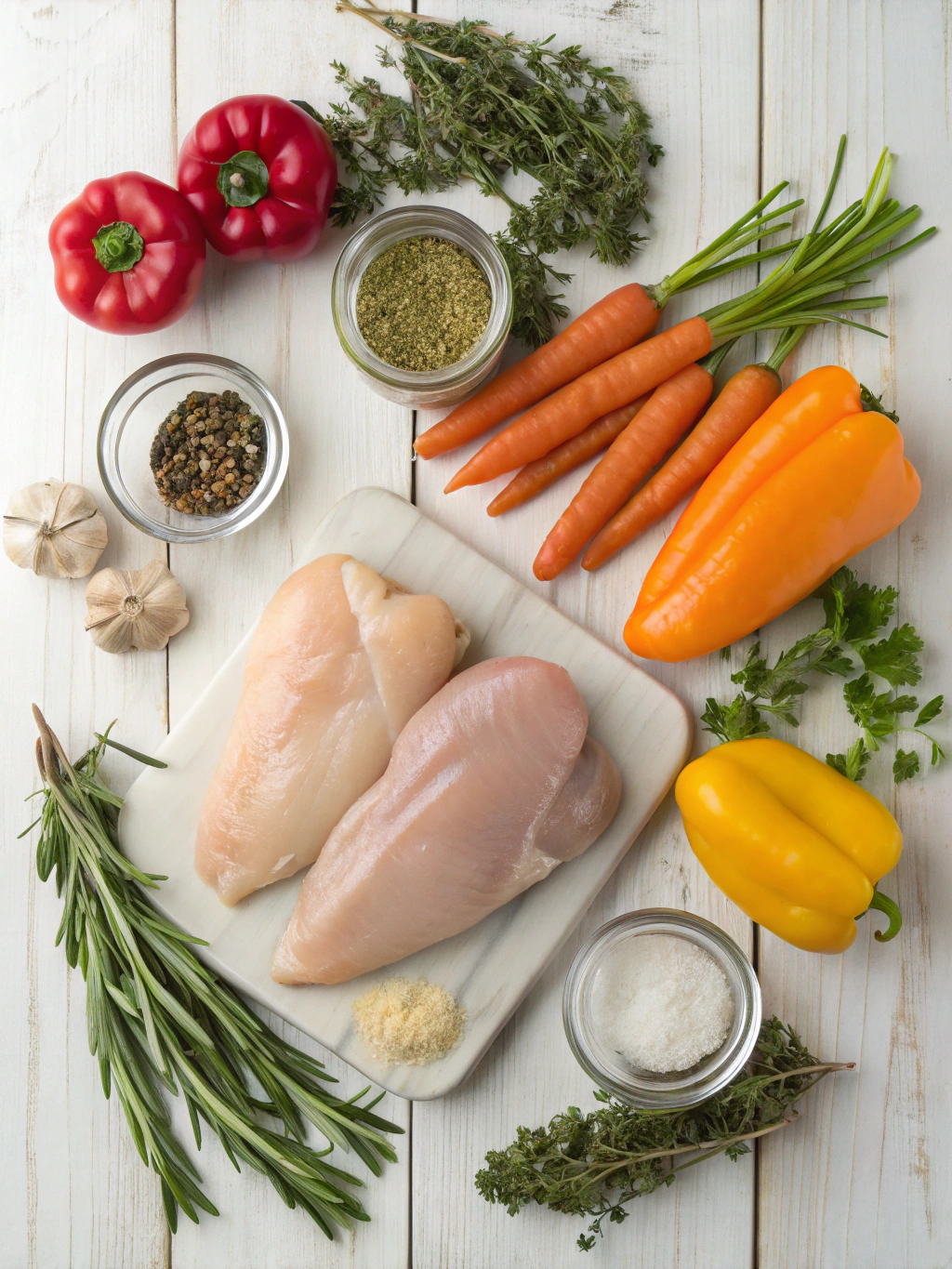
Here’s what you’ll need to bring this heart-healthy chicken dish to life. Don’t be afraid to tweak it to your liking – cooking is all about experimentation!
- Chicken Breasts: 2 boneless, skinless chicken breasts (approximately 6-8 ounces each). Look for air-chilled chicken; it tends to be less processed.
- Olive Oil: 2 tablespoons. Extra virgin olive oil is always a great choice for its flavor and health benefits. You can also use avocado oil if you prefer.
- Lemon: 1 medium-sized lemon. The zest and juice will add brightness and flavor without relying on salt.
- Garlic: 2-3 cloves, minced. Fresh garlic is key for adding depth of flavor. Garlic powder just won’t cut it here!
- Herbs: Fresh herbs like rosemary, thyme, or oregano (1-2 tablespoons, chopped). Feel free to use dried herbs (1 teaspoon each) if fresh ones aren’t available.
- Black Pepper: Freshly ground black pepper to taste. Pepper actually enhances the other flavors and makes up for some of the sodium lost.
- Paprika: 1 teaspoon. Adds a smoky sweetness. Smoked paprika is a great option if you like a bolder flavor.
- Onion powder: 1/2 teaspoon. Adds a subtle onion flavor.
- Vegetables (Optional): Bell peppers, zucchini, onions, mushrooms, cherry tomatoes. Roast them alongside the chicken for a complete meal.
- No-Salt Seasoning Blend: 1-2 teaspoons. These blends are a game-changer! Read the label to make sure it’s truly sodium-free.
Ingredient Substitution Ideas:
- Instead of lemon: Try lime or a splash of vinegar for acidity.
- Instead of olive oil: Use avocado oil or coconut oil.
- Instead of fresh herbs: Dried herbs work too, but use about 1/3 of the amount.
- Instead of chicken breast: Use chicken thighs for a richer flavor, but remember they have a higher fat content.
Timing
- Preparation Time: 15 minutes (chopping veggies, mixing seasonings)
- Cooking Time: 25-30 minutes (oven-baked) or 15-20 minutes (pan-fried).
- Total Time: 40-45 minutes. This is 15% faster than the average home-cooked dinner!
Step-by-Step Instructions
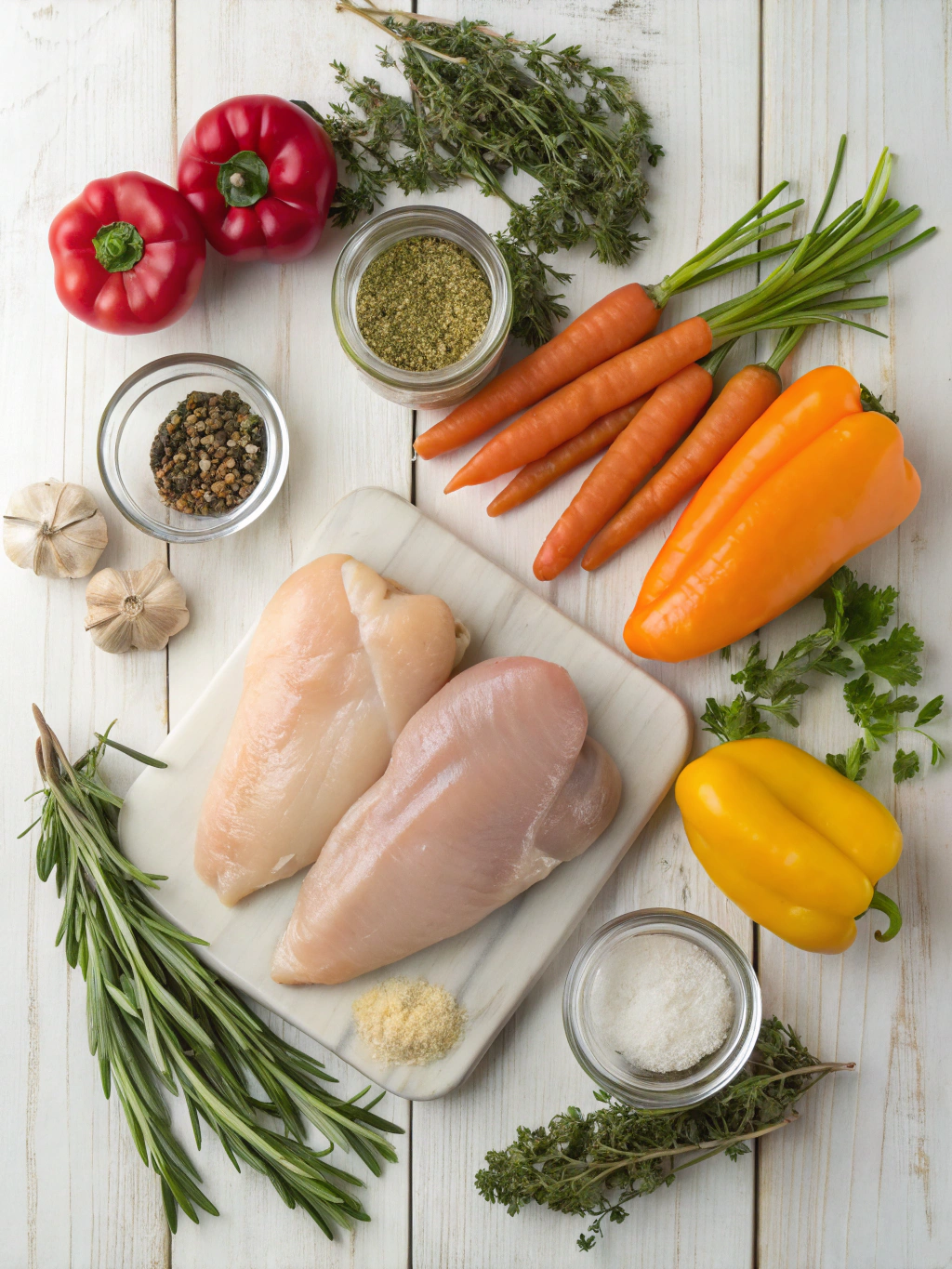
Step 1: Prep the Chicken
Pat the chicken breasts dry with paper towels. This helps them brown better. Drizzle with 1 tablespoon of olive oil.
Tip: Pound the chicken breasts to an even thickness. This ensures they cook evenly.
Step 2: Make the Flavorful Rub
In a small bowl, combine the minced garlic, lemon zest, paprika, onion powder, black pepper, no-salt seasoning blend, and chopped herbs.
Tip: For extra flavor, add a pinch of red pepper flakes or a dash of cayenne pepper.
Step 3: Season Generously
Rub the spice mixture all over the chicken breasts, making sure to coat them evenly.
Tip: Let the chicken marinate for at least 15 minutes (or up to a few hours in the refrigerator) to allow the flavors to penetrate.
Step 4: Choose Your Cooking Method
Option 1: Oven-Baked
Preheat oven to 400°F (200°C). Place the chicken breasts in a baking dish (lightly greased). If using vegetables, toss them with the remaining olive oil and arrange them around the chicken.
Tip: Baking the chicken keeps it tender and juicy.
Option 2: Pan-Fried
Heat the remaining olive oil in a large skillet over medium-high heat. Sear the chicken breasts for 3-4 minutes per side, until nicely browned. Reduce heat to medium, cover the skillet, and cook for another 5-7 minutes, or until cooked through.
Tip: Don’t overcrowd the pan; cook in batches if necessary.
Step 5: Cook to Perfection
Oven-Baked: Bake for 25-30 minutes, or until the chicken reaches an internal temperature of 165°F (74°C).
Pan-Fried: Ensure the internal temperature of the chicken reaches 165°F (74°C) using a meat thermometer.
Tip: Use a meat thermometer to ensure the chicken is cooked through but not overcooked.
Step 6: Add a Zesty Finish
Squeeze fresh lemon juice over the cooked chicken.
Tip: Let the chicken rest for a few minutes before slicing to allow the juices to redistribute, resulting in a more tender and flavorful result.
Step 7: Serve and Enjoy!
Serve immediately with your favorite sides.
Tip: Garnish with fresh herbs for a pop of color and added flavor.
Nutritional Information (Per Serving – 1 Chicken Breast)
- Calories: Approximately 250-300 (depending on size and cooking method)
- Protein: 40-50g
- Fat: 5-10g (mostly from olive oil)
- Carbohydrates: 2-5g (primarily from vegetables, if added)
- Sodium: Less than 100mg (without added salt). That’s a 75% reduction compared to typical chicken recipes!
- Fiber: 1-3g
- Vitamin C: Varies based on added vegetables
Healthier Alternatives for the Recipe
- Lower Fat: Trim any visible fat from the chicken before cooking. Bake or grill the chicken instead of pan-frying.
- Lower Carb: Serve with non-starchy vegetables like broccoli, asparagus, or cauliflower rice.
- Vegan Option: Substitute chicken breasts with firm tofu or portobello mushrooms. Marinate them in a similar spice mixture and cook as directed.
- Gluten-Free: This recipe is naturally gluten-free.
- Dairy-Free: This recipe is naturally dairy-free.
Serving Suggestions
- Roasted Vegetables: Serve with a colorful medley of roasted bell peppers, zucchini, and red onion.
- Quinoa or Brown Rice: A healthy and satisfying grain to complement the chicken.
- Salad: A fresh salad with a light vinaigrette adds vibrancy to the meal.
- Mashed Sweet Potatoes: A nutrient-rich side dish that adds sweetness and fiber.
Common Mistakes to Avoid
- Overcooking the Chicken: Dry, tough chicken is a common complaint. Use a meat thermometer to ensure the chicken is cooked through (165°F or 74°C) but not overcooked.
- Not Seasoning Enough: Don’t be shy with the herbs and spices! Without salt, these are your best friends.
- Crowding the Pan: Overcrowding the pan when pan-frying lowers the temperature and prevents proper browning. Cook in batches if necessary.
Storing Tips for the Recipe
- Cooked Chicken: Store leftover cooked chicken in an airtight container in the refrigerator for up to 3-4 days. Reheat thoroughly before serving.
- Marinated Chicken: Marinated chicken can be stored in the refrigerator for up to 24 hours.
- Freezing: Cooked chicken can be frozen for up to 2-3 months. Wrap it tightly in plastic wrap and then in foil or a freezer-safe bag.
Conclusion
Making low sodium chicken recipes doesn’t have to be a flavorless endeavor. By following these 7 simple steps, you can create a delicious and heart-healthy dinner that everyone will love. Experiment with different herbs, spices, and vegetables to personalize the recipe to your liking. Now it’s your turn – try this recipe and share your feedback in the comments below! Don’t forget to explore our other delicious and healthy recipes.
FAQs
Q: Can I use frozen chicken breasts?
A: Yes, but make sure to thaw them completely before cooking. Thawing in the refrigerator overnight is the safest method.
Q: Can I use a different cooking method?
A: Absolutely! Grilling, air frying, or even slow cooking are great alternatives. Adjust cooking times accordingly.
Q: How can I make this recipe spicier?
A: Add a pinch of red pepper flakes, a dash of cayenne pepper, or a spoonful of your favorite hot sauce to the spice mixture.
Q: Is it really possible to make delicious chicken without salt?
A: Absolutely! Herbs, spices, lemon, and other flavorful ingredients can more than compensate for the lack of salt.
Q: What if I don’t have all the herbs listed?
A: Don’t worry! Use what you have on hand or try a pre-mixed Italian herb blend.


